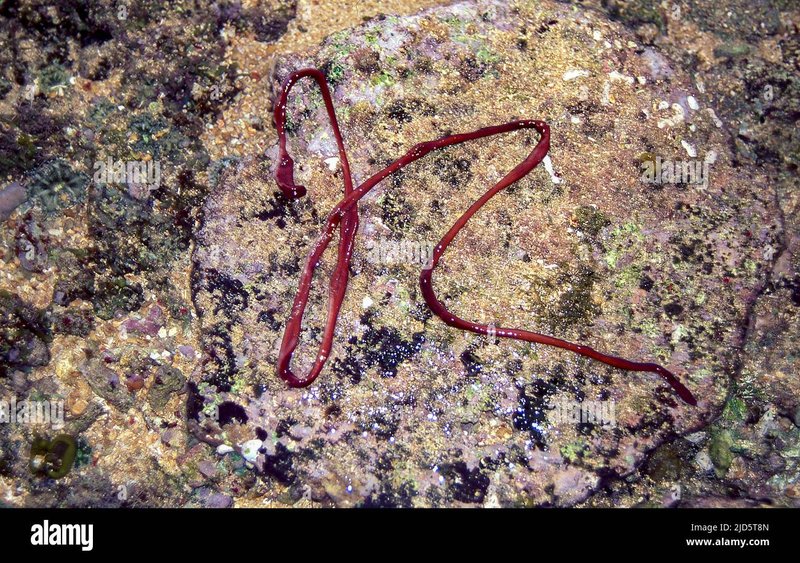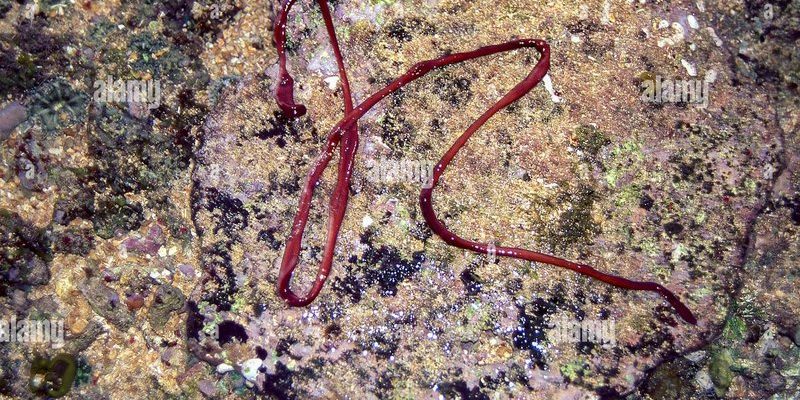
Identifying ribbon worms can feel a bit like solving a puzzle. They come in various colors and sizes, and their movements can be mesmerizing. You might be wondering, “What exactly should I be looking for?” Well, this guide will help you recognize these creatures effectively. Let’s dive into the wonderful world of ribbon worms and figure out how to spot them in those coastal rock pools.
What Are Ribbon Worms?
Ribbon worms, or nemerteans, are a group of marine invertebrates that can be found in many coastal environments. They are known for their elongated bodies, which can sometimes stretch several feet long! Imagine a long, flexible ribbon undulating in the water—this is what sets them apart from other creatures in rock pools.
These worms are not only interesting because of their shape but also due to their behavior. They are predatory in nature and often hunt small marine animals. If you look closely, you might see them using a specialized organ called a proboscis to capture prey. This organ is often hidden but can be extended quickly when the worm is hunting.
So, when you’re exploring a rock pool, keep your eyes peeled. Ribbon worms can often blend in with their surroundings, hiding among seaweed or other debris. But don’t worry; once you know what to look for, spotting them becomes much easier.
Characteristics of Ribbon Worms
Identifying ribbon worms comes down to a few key characteristics. First, let’s talk about their **coloration**. You might find them in shades of brown, green, yellow, or even red. Their coloration helps them camouflage into their environment, making them tricky to spot.
Next, their **body shape** is crucial for identification. Ribbon worms have long, flat bodies that can appear segmented. However, unlike earthworms, they often have a smooth, shiny surface that glistens in the light. If you touch them, you’ll notice they’re quite slippery, which helps them escape from predators.
Another important aspect to consider is their **habitat**. Ribbon worms are typically found in shallow waters, usually hiding under rocks or in sandy substrates. When the tide goes out, they can also be seen exposed in rock pools. Knowing where to look increases your chances of spotting them.
Where to Find Ribbon Worms
So, where should you start your search for ribbon worms? The best places are coastal rock pools, especially during low tide. These pools often trap various marine life, making them rich ecosystems. Look for pools with lots of seaweed, as ribbon worms love to hide among the strands.
You’ll want to focus on the **edges of the pools**. Ribbon worms often venture out near the water’s edge, so that’s a prime location for spotting them. When peering into a pool, take your time. The more relaxed you are, the better you can observe.
Keep in mind that **weather conditions** can influence your quest. Sunny days can make it harder to see into the water, while overcast days might provide better visibility. If the water is murky from recent waves, it might be wise to wait for clearer conditions.
How to Observe Ribbon Worms Safely
If you’re excited about spotting ribbon worms, it’s essential to observe them safely and respectfully. First, be mindful of your movements. Sudden movements can scare them away. Approach the pool quietly and gently peer in without splashing.
If you do spot one, resist the urge to touch it. Ribbon worms are delicate creatures, and touching them can cause stress. Instead, you can use a small net or a container to see them up close—just remember to return them to their habitat after observing.
Here’s the thing: if you want to study them further, taking notes or sketching can be a fun way to engage with your find. You might jot down their color, size, and even interesting behaviors you notice. Just remember, the goal is to appreciate these wormy wonders without causing harm.
Common Ribbon Worm Species
In your coastal exploration, you might come across several species of ribbon worms. Here are a few notable ones:
- Lineus longissimus: This is one of the longest species of ribbon worms, reaching up to 30 feet! Typically, it’s a pale color, which helps it blend into sandy environments.
- Cephalothrix spp: Known for their bright colors, these ribbon worms can be spotted easily. They usually inhabit rocky areas, making them a great find.
- Amphiporus spp: These worms tend to be a bit more secretive, hiding well under rocks. They can be identified by their unique patterns.
When identifying different species, pay attention to their specific features. Some might have distinctive markings, while others might differ in size. Each encounter is a chance to learn and explore more about coastal ecosystems.
The Importance of Ribbon Worms in Marine Ecosystems
Ribbon worms may seem simple, but they play a vital role in their ecosystems. As predators, they help control the populations of smaller marine animals, ensuring a balanced environment. This balance is crucial for the health of coastal waters.
Additionally, ribbon worms contribute to nutrient cycling. When they hunt and consume prey, they help break down organic materials, thus enriching the substrate. This activity supports other marine life, creating a thriving habitat for countless organisms.
By understanding and appreciating these creatures, you’re contributing to marine conservation efforts. Every observation helps raise awareness about the importance of every species, no matter how small. So, dive into those rock pools with curiosity and respect!
Exploring coastal rock pools and identifying ribbon worms can be a rewarding experience. It opens your eyes to the wonders of marine life right at your feet. With a little patience and knowledge, you can spot these fascinating creatures and appreciate their role in the ecosystem.
So the next time you find yourself by the shore, take a moment to peer into those glittering rock pools. Who knows? You might just uncover the beauty of ribbon worms and gain a deeper respect for the coastal environment. Happy exploring!

